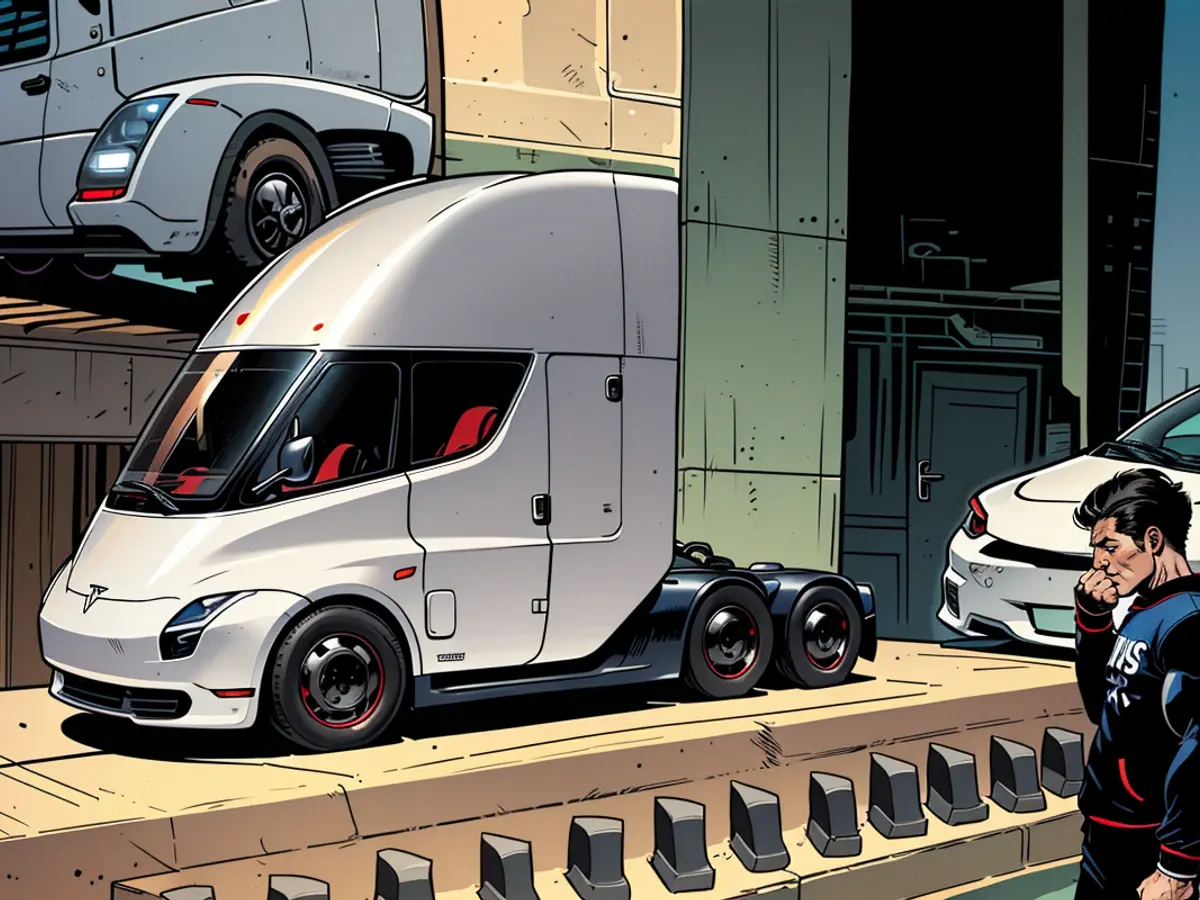Emergency services require approximately 200,000 liters of water to successfully douse a Tesla vehicle in flames.
In California, firefighters battled a blaze involving a Tesla electric semitruck following an accident. They required approximately 190,000 liters of water to put out the flames and manage the colossal battery system. The National Transportation Safety Board (NTSB) mentioned that firefighters needed a significant amount of water to suppress the fire and cool down the substantial vehicle batteries.
To prevent the inferno from spreading and sparking a wildfire, a firefighting plane was brought in, dispensing fire retardant over the flaming truck.
The mishap took place on August 19, just outside Emigrant Gap, a mountain pass in California's Sierra Nevada. A Tesla employee was at the wheel, driving the truck from Livermore to a Tesla facility in Nevada.
As per reports, the truck swerved off the road in a curve, collided with a tree, and tumbled down an embankment, striking more trees in the process. Thankfully, the driver escaped unharmed. The impact triggered an explosion in the electric lithium battery system, igniting a fire. The congested road had to remain closed for 15 hours due to the complex firefighting operations.
In November 2017, Tesla CEO Elon Musk showcased the design of the Tesla Semi and pledged that the electric semitruck would reach the market by 2020. Some units have already been delivered, including to beverage giant PepsiCo. However, Tesla has yet to initiate large-scale manufacturing. Construction of the production lines is underway at the Tesla plant in Nevada, with the objective of commencing mass production next year.
Firefighters had to be careful when managing the blaze, ensuring that the flames did not spread to other vehicles on the congested road. Despite the significant damage to the Tesla electric semitruck, no other vehicles were affected by the accident or the subsequent fire.








